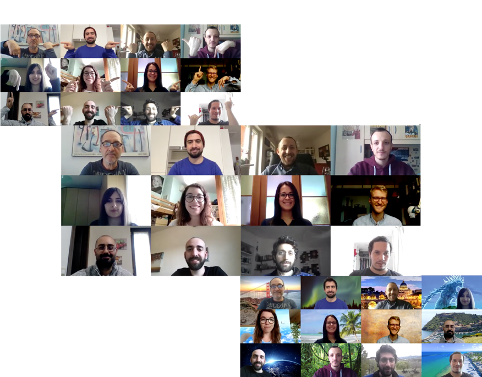
A star-shaped Prototype for future Quantum Networks
Twelve very young researchers, five laboratories to be coordinated and a network to be created. This is how the Quantum Information Lab of Sapienza University, an interdisciplinary group led by Fabio Sciarrino and made up of a master thesis student, six PhD students, an electronic technician, a post-doc researcher, and a lecturer, supported by the Brasilian physicist Rafael Chaves, created the first implementation of a five parties quantum network. This system, the largest ever realised, allows quantum correlations shared by more than three different parties.
Technologies based on the laws of quantum mechanics are more and more widespread and, by now, the potential advantages linked to their use are acknowledged in any fields, from communication to data protection. "Nevertheless, until now - says Gonzalo Carvacho, senior post-doc researcher of QuantumLab - experimental multipartite nonlocality tests have so far been limited to the simplest cases. Here, we go a step further towards the realisation of larger networks."
In the study published on Nature Communications, the team chose a "star-shaped" configuration, with a central node sharing entanglement with four other peripheral nodes. Each of them was located in a different laboratory, containing a source of quantum states and a station to perform measurements.
Each node generated a quantum state made of two sub-systems and sent one of them to the central one, by 30 meters long single-mode fibres. At this point, both the central and peripheral nodes measured their system, being synchronised through sophisticated software specially made for this experiment.
"At the end – says Davide Poderini, PhD student – we could verify that the sources of quantum states were not communicating by using classical correlations but only quantum (or more generally non-classical) correlations. By using completely different devices in distinct laboratories, we can definitely ensure a high degree of independence between them."
"Such result – says Iris Agresti, now junior post-doc of QuantumLab – represents a significant step further towards the realisation of a large quantum network, because it offers a scalable building block, going beyond the simplest scenario involving three parties."
The outcomes of this experiment, versatile by its very nature, may prove pivotal for new studies on different network topologies able to create various types of non-classical correlations, opening new and unexplored scenarios. Moreover, this setup may be employed to create new communication and cryptography protocols.
"The next step – notes Professor Fabio Sciarrino – is to combine protocols of quantum communications with quantum computation ones, exploiting both of the group's main areas of expertise, in integrated photonics and distributing quantum states to separate parties."
References:
Experimental violation of n-locality in a star quantum network - Davide Poderini, Iris Agresti, Guglielmo Marchese, Emanuele Polino, Taira Giordani, Alessia Suprano, Mauro Valeri, Giorgio Milani, Nicolò Spagnolo, Gonzalo Carvacho, Rafael Chaves and Fabio Sciarrino - Nature Communications volume 11, Article number: 2467 (2020) DOI 10.1038/s41467-020-16189-6
Further Information
Fabio Sciarrino
Department of Physics
Sapienza School for Advanced Studies (SSAS)
fabio.sciarrino@uniroma1.it
